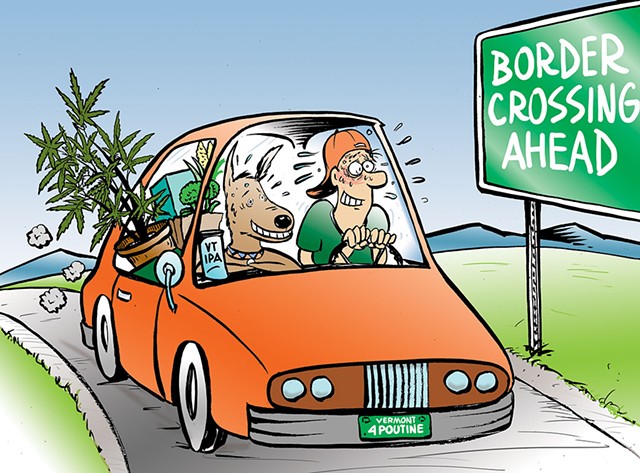
- Tim Newcomb
Effective June 23, 2023, and until further notice, Amtrak has canceled Adirondack line service north of Albany, N.Y. Click here for more information.
The first sign of potential trouble was the all-caps warning on Interstate 89 outside Milton: "No Trucks Québec Rt 133 NB; Seek Alt Crossing."
I was headed north, toward the border crossing at the end of the highway in Highgate Springs — Vermont's most heavily trafficked gateway to Québec. It's a popular route for good reasons: It boasts several lanes, including one designated for commercial vehicles. And it's the most direct route to Montréal from Boston, New Hampshire and much of Vermont.
A mile or so after I crossed into Canada, I spotted another warning sign, this one in French: "Sur gravier."
Sure enough, orange cones soon appeared, and the road narrowed to one lane, then veered hard right, dumping motorists onto a gravel road. For a couple of miles, Montréal-bound traffic bumped its way along, passing houses, clumps of trees and open farm fields.
It's a temporary diversion. But, at least through July, the route is no picnic: It's slower, and, aside from the rough road, there are no lights or reflective markers, so it's pitch-black at night. The saving grace? No 18-wheelers on the dirt-road detour.
A stretch of rutted road is just one of the things you should be aware of as you plan a trip to Québec. The good news: There are 14 other vehicle crossings, many suitable for pedestrians and cyclists, along Vermont's 78 miles of border with Canada. Some, but not all, are open 24 hours. Travelers headed north can also arrive by boat or train (at least from New York State — more on that later).
However you travel, when you cross the boundary northbound, you'll go through a checkpoint overseen by the Canada Border Services Agency. On the way back, you'll stop and talk to someone from U.S. Customs and Border Protection.
Be prepared for questions about where you're headed, how long you're staying in Canada and what your plans are. A border agent will likely ask if you have certain things in your car — including food, alcohol, weapons or cannabis — and where you're from. The number of questions you're asked, and what they're about, can vary. A border agent might have some unexpected queries for your passengers, too.
Before heading north, gas up: In Québec, petrol is sold by the liter (thanks, metric system!) and, converted to U.S. measures, costs more than $4.50 per gallon.
"It's almost never cheaper in Canada," Patrick De Haan, head of petroleum analysis at GasBuddy, a price-tracking website, told Seven Days.
Once you're in Québec, a reminder: Speed limits are set in kilometers per hour, so that "Maximum 100" sign converts to about 62 miles an hour. Most car speedometers have a kilometer-per-hour indicator, so use that to stay on the right side of the law.
Speaking of which: You can turn right after stopping at a red light, except in Montréal or where signs prohibit it. And if you see a flashing green light? It means you have the right of way to make a left turn, like an arrow in the U.S.
Here's what else to know if you are planning a visit to Québec.
When will the new highway to Montréal, Autoroute 35, be done?
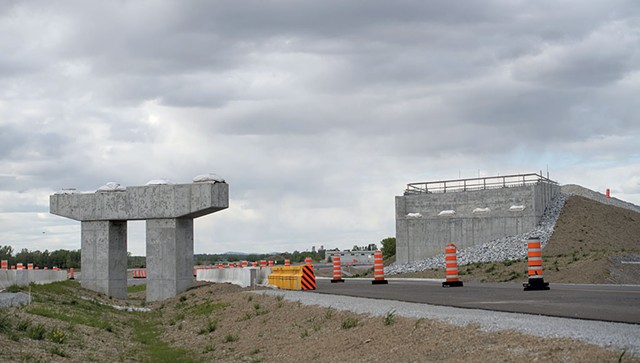
- Daria Bishop
- Construction on the Autoroute 35 extension
That detour I ran into? It's a way around a construction zone on Route 133, a road that is being revamped as part of an extension of the A-35, a four-lane highway. Once complete, the remade route could shave as much as 30 minutes off the two-hour trip from Burlington to Montréal, according to Vermont Transportation Secretary Joe Flynn.
The current configuration is "a road that's not designed for today's volume and today's traffic," Flynn said, noting safety concerns. "The A-35 will be a huge deal."
Significant chunks of the 23.5-mile project are complete, but it's not done yet. The current detour skirts the construction of an overpass just north of Philipsburg, along what's known as Segment 3.
Still to be constructed: the shortest stretch, Segment 4, which runs north from the border to Segment 3. That final piece is the most complex because it involves redeveloping Route 133 instead of building new roadway, according to Karen Songhurst, a policy analyst at the Vermont Agency of Transportation. There are also environmental constraints, she added. Work is scheduled to begin in 2025 and could last a couple of years.
The new road is expected to increase traffic through the crossing, and there's a plan under way to redevelop the Highgate Springs port of entry in the next several years. So it will be a while before the drive to Montréal via I-89 is totally smooth sailing.
Speaking of sailing — I can boat into Canada?
Indeed! There are four piers on the Québec side — two on Missisquoi Bay and two on Lake Memphremagog — where arriving boaters must tie up and use a phone by the dock to check in with border agents. The process is similar to a manned checkpoint — just, uh, without a person actually there.
A fifth station — on the northwest side of Lake Champlain, on the Richelieu River — is staffed by border service officers, like a more traditional crossing. Bon voyage!
What documents do I need to enter Canada?
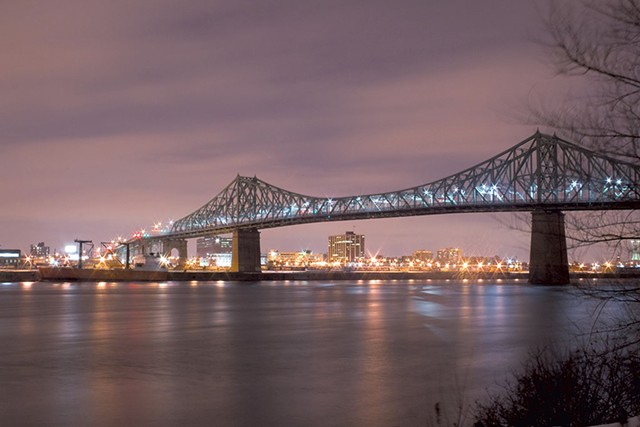
- © Blissin | dreamstime.com
- Jacques Cartier bridge
Fun fact: U.S. citizens and permanent residents don't need a passport to cross the border, though "a passport remains the most recommended identification document," an official at the Canadian border agency said in an email. One alternative for those without a passport is the enhanced driver's license issued by the Vermont Department of Motor Vehicles. It allows you to cross into Canada by land or sea.
If you are an American citizen or permanent resident, your birth certificate plus a regular driver's license or other photo ID will do the trick. But the crossing process will probably take longer than a simple swipe of your passport because the agent must manually enter all of your information.
Minors under the age of 16 need only a birth certificate to get across. Once they're 16, they also need photo ID.
What about crossing the border with children?
The Canadian border patrol is on high alert for potential kidnappings and human trafficking, according to Erik Paradis, director of the Montérégie Border District, which includes some of the boundary with Vermont.
A child accompanied by two parents shouldn't have a problem. But if only one parent is traveling with a child under 18, they must bring a letter from the other parent granting permission for the child to enter Canada. The letter must include a phone number to enable border agents to reach that parent, Paradis said. To be on the extra safe side, you can bring along a photocopy of the other parent's passport or ID.
If you don't come prepared with the permission letter, Paradis said, "you're going to spend a lot of time at the border trying to explain how you ended up in this situation and while the officer makes all the appropriate certifications to make sure everything is fine."
This goes for other people's children, too. Seven Days writer Ken Picard recently took his son and some friends for a birthday outing to Parc Safari. Picard said they breezed through because they were prepared with permission slips and passports or original birth certificates for each kid.
My dog loves poutine. Can she come?
You betcha! Very important, though: Bring proof that your pup has had a rabies vaccination. You should be able to get that documentation from your vet. If you can't, Fido needs to stay home; Canada won't let her in.
Related Vive le Verbec: Seven Days' Field Guides to Visiting Summertime Québec
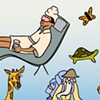
What's the deal with NEXUS lanes?
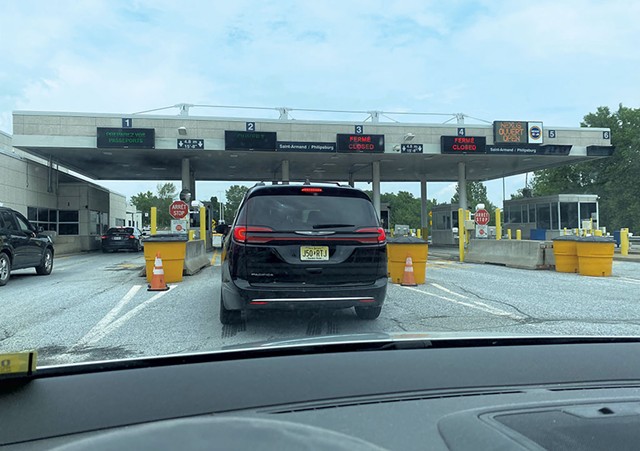
- Sasha Goldstein ©️ Seven Days
- Crossing into Québec at the end of Interstate 89
At the border, NEXUS lanes allow expedited travel for people who have preclearance from the government — think of it as the car equivalent of "global entry" for frequent fliers. But to use the lanes, one must apply, pay a $50 fee, pass a background check and sit for an interview with a U.S. official. Both the U.S. and Canadian governments must sign off.
Given the lengthy process, Paradis of the border agency said it's not worth trying to get approved for travel this summer — it ain't gonna happen. According to the U.S. border patrol website, applications are taking more than a year to process.
NEXUS lanes aren't available at every crossing, but there's one in Highgate Springs and another in Champlain, N.Y. There are also limited NEXUS lane hours for northbound traffic in Derby Line.
Cannabis is legal in Vermont and Québec. Can I travel with Mary Jane?
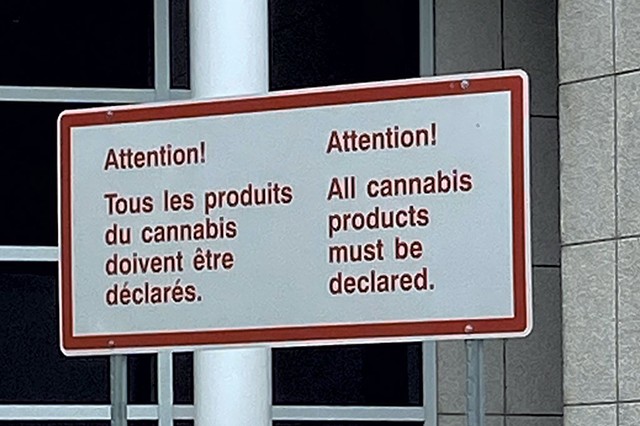
- Sasha Goldstein ©️ Seven Days
- A warning at the border crossing
That's a hard no. Officials from both governments emphasized as much in recent interviews. If you're approaching the Canadian border and realize you brought along some weed, declare it. They'll take it from you and let you on your merry way.
If you don't fess up and the Canadian officials find your stash, you could face fines or even criminal charges. But, Paradis noted, "it's different if we find a bag of cannabis on the back seat of your car, or if we find three kilos in your spare tire."
I have a DUI. Can I enter Canada?
There's no simple answer here. But if it's been 10 years or more since you finished your sentence for a driving-under-the-influence conviction and you haven't had more trouble with the law, you are considered rehabilitated and can enter the country. If it hasn't been 10 years, you should visit the Canadian border agency website to learn more; in some cases, you can pay a fee and apply for entry. Your best bet would be to contact a lawyer who can help you through the process and answer any questions. (See "Scarlet Letters").
Related A Writer Crosses the Québec Border Years After a DUI
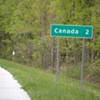
The rules apply to any traveler, not just drivers.
Can I take Amtrak to Montréal?
You can! But, for the foreseeable future, you'd need to cross Lake Champlain and catch a ride in New York. The daily Adirondack train, which recently resumed service after a long pandemic hiatus, stops in Port Henry, Westport, Port Kent, Plattsburgh and Rouses Point before its final destination, Montréal's Central Station.
The train stops at the border, and agents board it to check passports. That can take one to two hours, according to Dan Delabruere, the rail and aviation bureau director at VTrans. For the past 12 years, he's been working on an alternative: extending the service of Amtrak's Vermonter line, which currently ends in St. Albans, to Montréal.
The project is a top rail priority for VTrans, according to Delabruere, and there has been progress. But it's a complicated endeavor, mainly for one reason. Rather than clearing customs at the border, travelers would go through a checkpoint inside Montréal's Central Station upon arrival or before departing. A study due this fall explores the feasibility of such an arrangement.
Much of the 18 miles of rail line between St. Albans and the Canadian border is in good shape and ready to go, according to Delabruere. But some of the track in Canada would likely need to be upgraded to accommodate the train's speed, he said. If the train were to travel too slowly, officials worry, people could jump on — or off — without having cleared customs.
Delabruere is confident the project will be built, but not for years.
"Once it's done," he said, "I think there's gonna be a lot of people in Vermont that enjoy it."
Can I use my cellphone in Canada?
During a visit north of the border earlier this year, my first since it reopened after COVID-19, I kept my phone on airplane mode and used Wi-Fi at cafés. My Verizon network, I later learned, works just fine in Canada for a small daily fee that covers data and calls. Oops.
You should check with your mobile phone provider for details before you rack up charges. Some plans available through AT&T, for instance, provide free coverage in Canada.
Chances are good you'll want your phone in working order. It's great for GPS and if you need to translate some French along the way.
And there's a twist: In December 2018, the Canadian government increased the penalties for DUI. So if you've had one since that time, you will be denied entry to the country for good, even after the 10-year period, according to Paradis. Word to the wise...
I made it to Montréal! Now where the f&%$ do I park?!
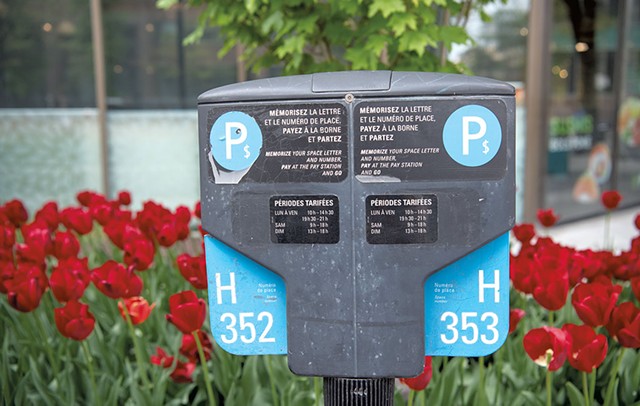
- Daria Bishop
- Parking meter in Montréal
Parking in Montréal is a complicated business, made more difficult if you don't speak or read French. Much of the available parking is reserved for residents, but you can find spots downtown and in tourist-heavy areas. Parking in monitored garages can run from 22 to 30 Canadian dollars per 24 hours.
Before going, it's worth downloading the P$ Mobile Service app. If you're still eating dinner and your meter is running low, you can use the app to pay for a few more minutes without leaving the table.
Martine Venne, the media relations manager for Tourisme Montréal, recommended parking your car somewhere for the duration of your trip — outside the city center, in a guarded parking lot or wherever you're staying — and using public transport. Venne, who hasn't owned a car for seven years, said Montréal's metro is reliable, clean and safe, and the city is dotted with stops.
"No traffic, no hassle," she said. "And you can drink more at restaurants and get home safely."
There's been a huge spike in car thefts in Montréal. Should I be concerned?
Several Canadian news outlets have reported that nearly 10,000 cars were stolen in the city last year — about double the number in 2020. The pace has continued this year, and an investigation by CBC News discovered that organized thieves were behind the spike, shipping the cars out of the Port of Montréal to the Middle East and Africa.
Vermonters have experienced this. Christine Lynch of Bristol was on Vermont Public's "Vermont Edition" in March after her Honda CR-V was stolen from a paid, monitored garage. The police, she said, told her that the thieves were seeking SUVs with keyless, push-button ignitions, such as CR-Vs and Toyota RAV4s.
"One of the police officers told me his own Honda was stolen last year," Lynch told host Connor Cyrus. "So even the police are victims of these crimes!"
To deter thefts, police recommend steering wheel locks. Remember to lock your doors, and don't leave important items, such as a passport, in your vehicle.
What should I know about coming back with food and other goods?
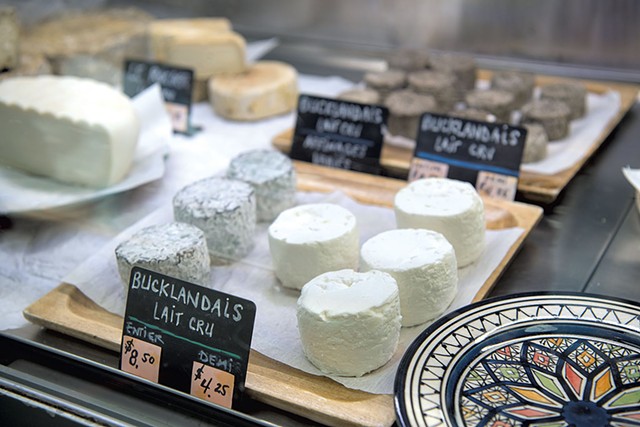
- Daria Bishop
- Marché Jean-Talon
Save the receipts for everything you bought in Canada — except for anything you've already consumed — and have them ready to show a border agent. You'll need to declare anything you're bringing back, including food.
Americans don't pay duty on Canada-made goods, according to Dale Warner, the U.S. border agency's port director for Highgate Springs. But if you purchased something made elsewhere, or certain quantities of booze or cigarettes, you might need to pay a fee.
If you make a day trip to Canada and buy something that is subject to duty, up to $200 worth of goods are exempt, Warner said. The exemption is $800 if you spend more than 48 hours up north.
The trickiest thing is bringing back fresh foods. Bread, cakes and pastries are generally allowed into the U.S., but you need proof, such as a sticker, that any fruits or vegetables you're bringing across were grown in Canada, according to Warner. You can also bring back milk and cheese, as long as you have a package label or other proof it originated in Canada. Meat — fresh, cooked, cured or dried — is also generally allowed, but you're limited to 50 pounds per vehicle. If bringing back wild game, be prepared to show a hunting license. Restrictions on specific animal products may be imposed periodically. Check here for the latest.
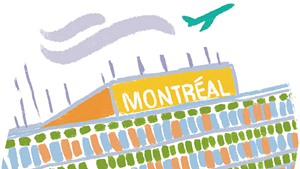

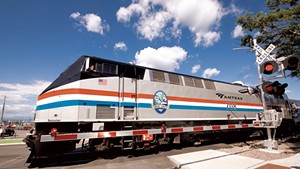









Comments
Comments are closed.
From 2014-2020, Seven Days allowed readers to comment on all stories posted on our website. While we've appreciated the suggestions and insights, right now Seven Days is prioritizing our core mission — producing high-quality, responsible local journalism — over moderating online debates between readers.
To criticize, correct or praise our reporting, please send us a letter to the editor or send us a tip. We’ll check it out and report the results.
Online comments may return when we have better tech tools for managing them. Thanks for reading.